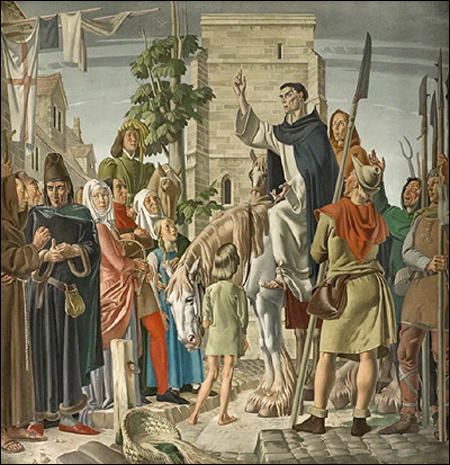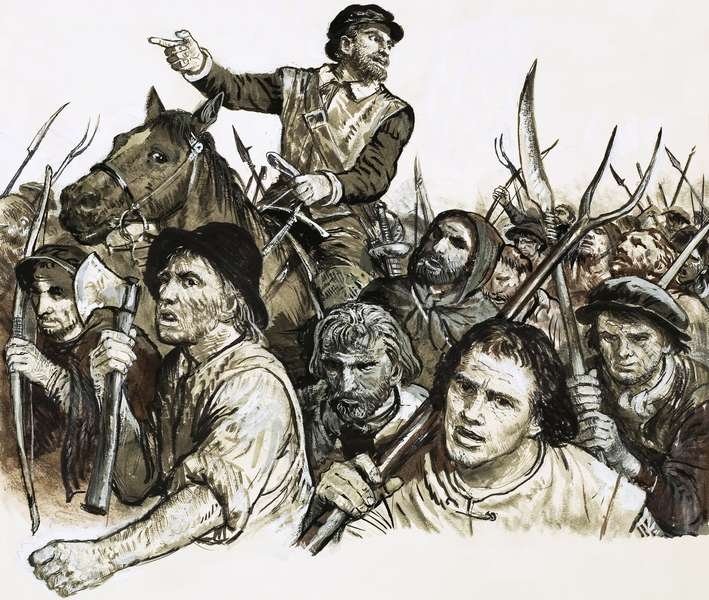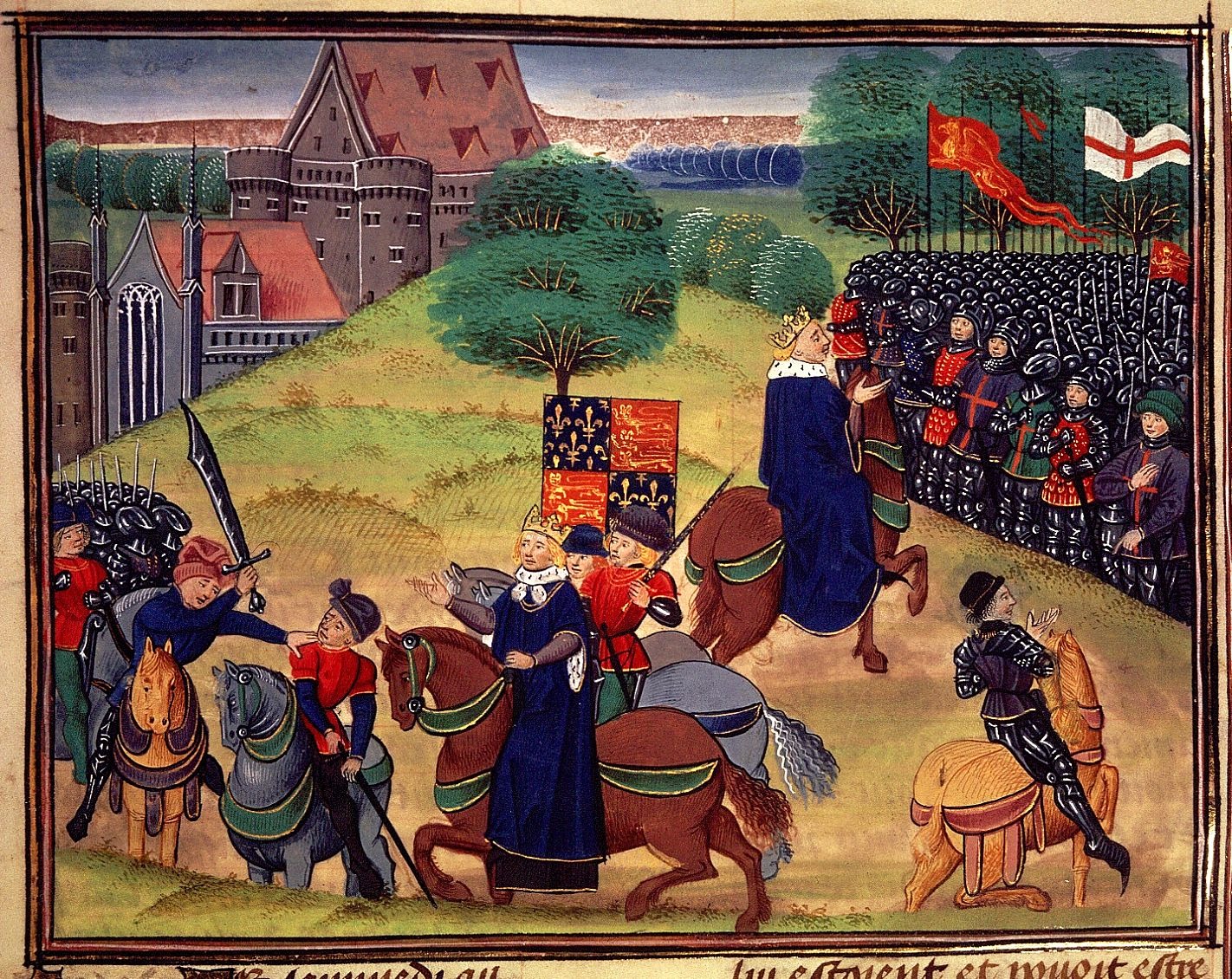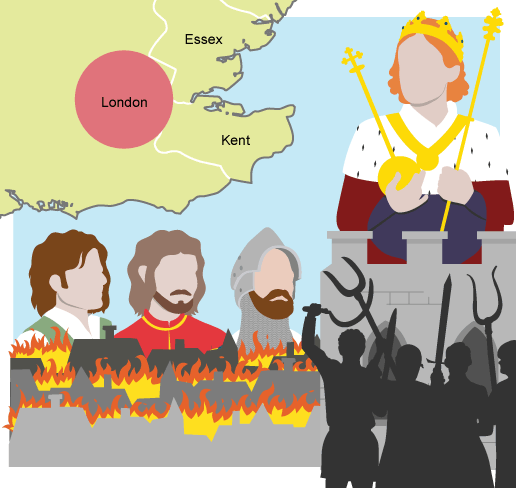The Peasants' Revolt
|
You will need to know:
|
|
What were the causes of the Peasants’ Revolt?
|
 |
 |
What were the main events of the Peasants’ Revolt? The revolt started in May 1381 when tax collectors arrived at the Essex village of Fobbing. They were attacked and thrown out of the village. When they returned with troops, they were also attacked. Word started to spread and villagers started joining together. In June 1381, peasants from Kent, who were now lead by Wat Tyler, captured Canterbury and burned tax records. They were hoping to capture Simon of Sudbury, the Archbishop of Canterbury, as he was the man who created the Poll Tax. Simon was in London so the rebel appointed a simple monk as their new Archbishop. Also in Kent, John Ball was freed from Maidstone prison. |
|
The peasants marched on London to meet with Essex rebel and seek a meeting with the king to air their grievances. As they marched, they attacked manor houses and destroyed any records of tax payments and labour services. By 12th June, about 60000 peasants were camped outside London.Richard took refuge in the Tower of London but, that night, the citizens of London allowed the peasants into the city. They went on the rampage; freeing prisoners, burning palaces and attacking lawyers. The next day, Richard arranged to meet the rebels at Mile End. He met with Wat Tyler and listened to his demands. Tyler wanted:
Richard agreed to all of these except death to traitors, as he said only courts had the power to sentence men to death. Richard had 30 clerks waiting to draw up charters of freedom so the peasants could take them away. However, some peasants were unhappy about the decision not to punish traitors so, that night, they took matters into their own hands and attacked and killed Robert Hales and Simon of Sudbury; they cut off their heads and displayed them on Tower Hill. That night in London saw riots and more killings. Many peasants had gone home but others remained and wanted more from the king. On the 15th June, Richard arranged another meeting with the rebels. This was held at Smithfield – a site chosen by the mayor of London, William Walworth, to get the peasants out of the city. |
 |
|
The king and Tyler greeted each other civilly and Tyler made his new demands:
At this point, the kings’ party could take no more. Tyler is rumored to have spat some drink on the ground and one of Richard’s men said he was no more than a common thief. Walworth tried to arrest Tyler so Tyler drew his dagger and tried to stab Walworth. However, he was wearing armour which deflected the blow. Walworth retaliated by slicing Tyler through the neck. Tyler fell and was surrounded by Richard’s men who completed the killing, out of view of the peasants. As the peasants realised what had happened they prepared to fight. Bravely, Richard rode out to the peasants and tells the he will be their “captain”. The peasants believed him and returned home. Richard was not as good as his word…. |
|
What were the consequences of the Peasants’ Revolt? Richard broke all of his promises and his vengeance was swift and brutal:
|
 |
|
Who ‘won’ the Peasants’ Revolt? It seems as if Richard did. Peasants were forced back to their old way of life and remained in servitude. Richard became increasingly powerful and his enemies were imprisoned. However, in the long term, it can be argued that he peasants won: the poll tax was never collected again, parliament never again tried to control wages, within 100 years the feudal system had disintegrated and peasants achieved their freedom. Richard was finally disposed and murdered and Henry IV became the new king. |